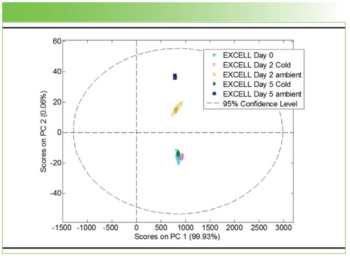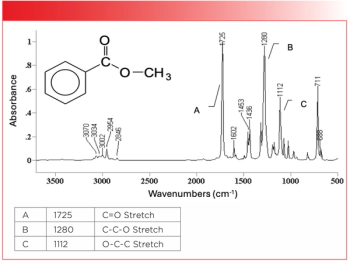Key Points
- Raman spectroscopy was shown to be an effective, non-invasive method for monitoring nitrate levels in greenhouse-grown spinach.
- The study found that partial least squares regression (PLSR) outperformed multiple linear regression (MLR) in predicting nitrate content from spectral data.
- This approach supports sustainable agriculture by enabling on-site, eco-friendly nitrate assessment, with future research aimed at expanding applicability across plant species and refining spectral models for broader adoption in precision farming.
In a recently published study, a team of researchers from Italy examined how Raman spectroscopy can be used to monitor nitrate levels in greenhouse-grown spinach. This study, which was published in the Journal of Agriculture and Food Research, shows how Raman spectroscopy can be effective for this application (1).
What is spinach, and what are its health benefits?
Considered to be a superfood, spinach is a leafy green vegetable that has several important health benefits. Chock full of vitamins and minerals, spinach is anti-inflammatory and helps maintain healthy eyesight, supports energy levels and heart health, and contains protective antioxidant properties (2).
Currently, a common way to grow spinach is through farming and greenhouse cultivation. However, these practices introduce several important considerations, including whether the practice of growing spinach is environmentally sustainable. There are also human health considerations, especially since spinach is known for accumulating high levels of nitrates (1).
As a result, it is important to note that nitrate testing methods often require labor-intensive chemical analysis and destructive sampling. In this study, the researchers tested whether Raman spectroscopy can serve as a non-invasive alternative to traditional methods.
What was the experimental procedure?
As part of the experimental procedure, the research team cultivated baby spinach under three different nitrogen fertilization levels (0, 200, and 400 kg N/ha) to create a gradient of nitrate concentrations. Using a compact, portable Raman spectrometer, spectral data from spinach leaves were collected at two time points: during mid-growth and at harvest (1). The researchers did their best to maintain consistency by ensuring a consistent temperature and humidity level. The temperature was kept at approximately 17 °C, and the humidity levels were maintained around 74% (1).
The researchers analyzed 240 spinach leaves across all treatments. The Raman spectroscopy data was processed using two multivariate statistical techniques. The two multivariate statistical techniques examined were multiple linear regression (MLR) and partial least squares regression (PLSR) (1). Both models demonstrated high predictive accuracy (R² > 0.8), validating the potential of Raman technology for quantifying nitrate levels in plant tissue (1).
Which model performed better, PLSR or MLR?
Between the two models, the PLSR performed better in capturing complex relationships within the spectral data. As a result, compared to the MLR model, the PLSR model provided more reliable predictions (1). Compared to single-band Raman descriptors and traditional optical sensors such as the Dualex, Raman spectroscopy delivered superior performance. Although the Dualex sensor measured chlorophyll and flavonoid content to infer nitrogen levels, Raman analysis provided direct chemical insights into nitrate content, enhancing predictive accuracy when both tools were used in tandem (1).
By reducing dependence on chemical assays that generate toxic waste and by enabling precise, on-site nitrate monitoring, this method supports eco-friendly fertilizer practices and helps prevent nitrate runoff, which is a key factor in groundwater contamination and eutrophication of water bodies (1).
What are the next steps in this work?
The next step would be to scale up this technology for larger farming operations. Some of the considerations include the integration of Raman tools with existing farming systems, operational costs, and economic comparisons with current standard practices (1). Future studies should also expand the data set to encompass more plant species and varied growing environments to improve model generalizability (1).
The researchers also mention that the Raman technique could use further refinement through the identification of key spectral bands most strongly associated with nitrate presence (1). The insights gained from doing this should help researchers develop more targeted, precise models.
To summarize, this study highlights how Raman spectroscopy, particularly when combined with multivariate analysis and complementary sensors, can revolutionize nutrient monitoring in crops like spinach. By enabling rapid, accurate, and environmentally responsible nitrate assessment, the approach represents a leap forward in sustainable farming and food safety practices (1).
References
- Matteini, P.; Distefano, C.; de Angelis, M.; Agati, G. Assessment of Nitrate Levels in Greenhouse-grown Spinaches by Raman Spectroscopy: A Tool for Sustainable Agriculture and Food Security. J. Agric. Food Res. 2025, 21, 101839. DOI: 10.1016/j.jafr.2025.101839
- Williams, J. Top 10 Health Benefits of Spinach. BBC Good Food. Available at: https://www.bbcgoodfood.com/health/nutrition/ingredient-focus-spinach (accessed 2025-07-24).






